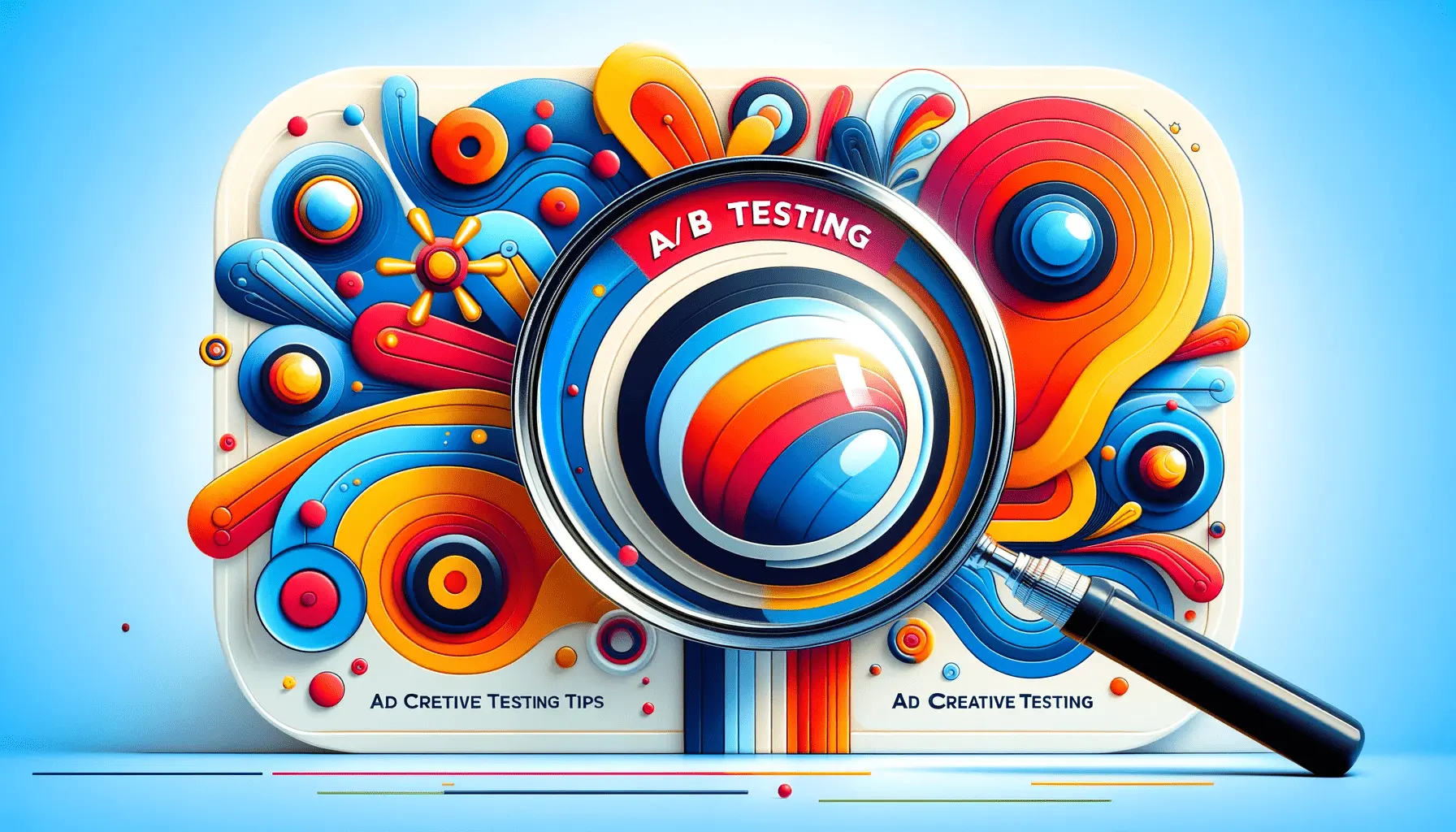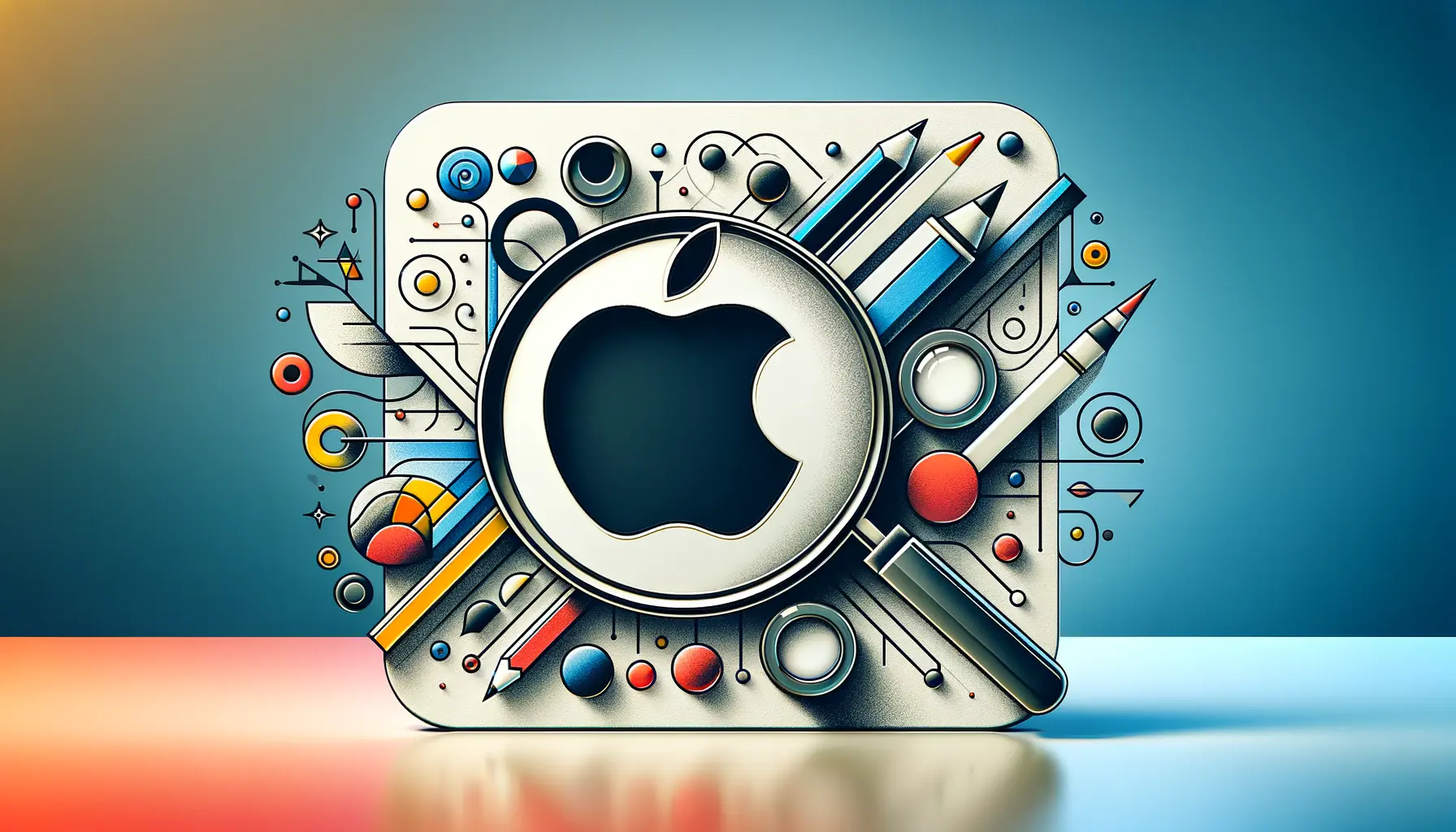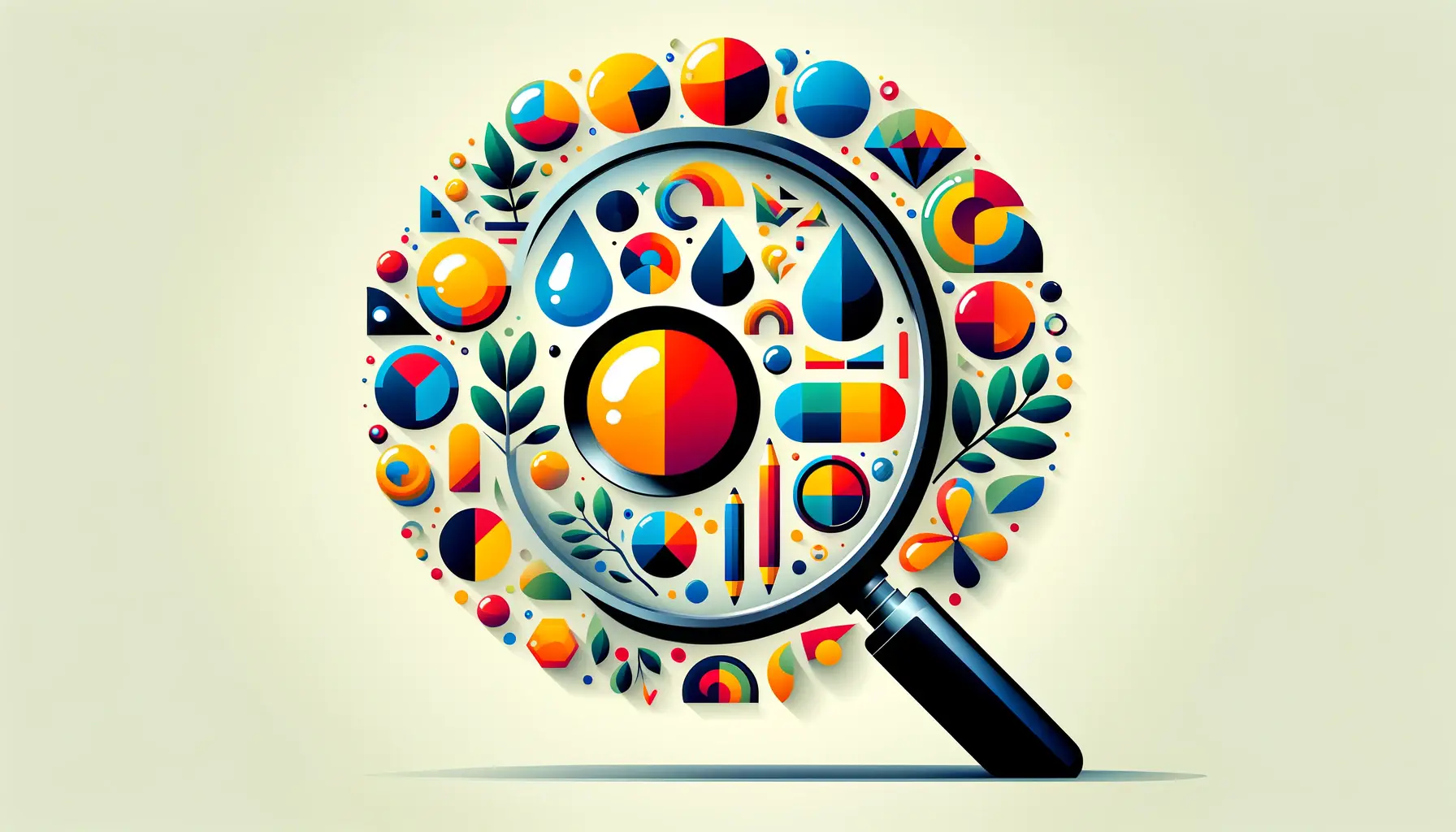In today’s high-speed digital environment, winning over your audience’s attention has never been more challenging.
When there are countless ads vying for consumer notice, how do you ensure your ad creatives stand out and get your message across?
Ad creative testing is the answer—both a sophisticated strategy that makes your advertising more effective and an ROIReturn on investment; a performance measure used to evaluate the efficiency of an investment.-maximizing solution.
- Understanding the Importance of Ad Creative Testing
- Key Elements to Test in Ad Creatives
- Best Practices for A/B Testing Ad Creatives
- Using Multivariate Testing for Further Insights
- Leveraging AI for Improved Ad Creative Testing
- Mastering Ad Creative Testing for Maximum Impact
- Frequently Asked Questions Regarding Ad Creative Testing
Understanding the Importance of Ad Creative Testing
Ad creative testing is a fundamental element of the digital marketing mix.
It involves testing various elements of your ads to understand which ones resonate most with your target audience.
By sequentially testing different creative elements, you can optimize your ads for better performance and ensure they align with your brand objectives.
Why Ad Creative Testing Matters
Using ad creative testing offers numerous significant advantages:
- Enhances Engagement: Identifying the creative elements that engage your audience allows you to boost higher rates of engagement, leading to greater brand awareness and customer loyalty.
- Enhances Conversion Rates: By optimizing ad creatives based on test results, you can achieve better conversion rates because the content is optimized to meet the needs and preferences of your audience.
- Reduces Financial Risk: Testing allows you to more effectively budget your ad expenditure by favoring ad creatives that earn you the best return, thereby avoiding wasted spending on low-performing ads.
Benefits of Effective Creative Testing
Delving deeper into the benefits, effective ad creative testing can:
- Offer Data-Driven Insights: It provides empirical proof of what works and what doesn’t, making it easier to make sound judgments for future campaigns.
- Facilitate Ongoing Improvement: Continuous testing fosters a culture of ongoing improvement, allowing your team to learn and refine tactics in response to shifting consumer behavior.
- Enhance Brand Consistency: Understanding which ad creatives perform best for your brand and what your audience expects helps you achieve a consistent and compelling brand image across all channels.
By embracing ad creative testing, you’re not guessing what works; you’re making informed decisions based on concrete evidence.
This strategic approach ensures that your advertisements are not only seen but also remembered and acted upon by your target audience.
Ad creative testing is crucial in identifying the most effective strategies for engaging your audience and maximizing ad performance.
Key Elements to Test in Ad Creatives
While testing ad creatives, focusing on specific elements can make your campaign more effective.
Through systematic testing of these elements, you can determine what performs best for your audience and optimize accordingly.
Visual Components: Images and Colors
Your ad’s visual appeal is a key factor in capturing and holding attention.
Trying out various images and color combinations can lead to greater engagement.
Experiment with:
- Image Subjects: Compare the effectiveness of product-only images against images of people using the product.
- Color Palettes: Test how different combinations of colors influence viewer perception and response.
- Visual Styles: Contrast illustrations, photos, and user-generated images to determine which works best for your brand and user preferences.
Headline and Copy Variations
Your headline and body copy have the potential to make or break your ad performance.
To find the best-performing messages, experiment with:
- Headline Length: Short, concise headlines versus longer, more explanatory headlines.
- Tone of Voice: Formal voice versus a lighter, more conversational style.
- Value Propositions: Highlighting different benefits or features to see what performs best with your audience.
Call-to-Action (CTA) Optimization
Your CTACall-to-action; a prompt in an ad that encourages the audience to take a specific action, such as clicking or purchasing. acts as the conversion bridge.
Testing different elements can reveal what drives your audience to take action:
- CTA Phrasing: Words like “Buy Now” versus “Learn More” may have different effects on engagement.
- Button Design: Experiment with size, color, and placement to determine what attracts clicks.
- Urgency and Incentives: Adding time-sensitive language or promotions to encourage immediate action.
By carefully testing these critical aspects of ad creative testing, you can optimize audience engagement to the fullest extent, ultimately leading to improved engagement and higher conversions.
Test specific elements such as images, colors, headlines, and CTAs to optimize audience engagement and drive higher conversions.
Best Practices for A/B Testing Ad Creatives
Testing your ad creatives effectively using A/B testingA method of comparing two versions of a single element to see which performs better. is essential to maximizing your ad campaigns.
These best practices will ensure that your tests yield relevant and actionable insights.
Building a Solid Hypothesis
Begin by defining a clear and measurable hypothesis.
This means identifying the specific element you believe will influence your ad’s performance and estimating the anticipated outcome.
For example, you might hypothesize that changing the call-to-action (CTA) copy from “Learn More” to “Sign Up Now” will increase conversions.
A well-structured hypothesis provides direction and intention to your testing process.
Testing One Variable at a Time
To accurately measure the impact of a specific change, it’s important to test one variable at a time.
Changing multiple elements simultaneously can create ambiguous results, making it difficult to determine which change affected performance.
By isolating variables—such as headline copy, image choice, or CTA placement—you can clearly identify what drives improvements in ad creative testing.
Ensuring Statistical Significance
For your A/B test results to be reliable, they must reach statistical significanceA measure of whether the results of a test are likely to be due to the factor being tested, rather than random chance..
This requires collecting enough data to confidently conclude that observed differences are not due to random chance.
Running tests with small sample sizes can lead to misleading conclusions.
Utilize statistical tools or calculators to determine the required sample size for your tests.
Allocating Sufficient Time for Testing
Allow your tests to run for an adequate period to gather meaningful data.
Cutting off a test too early can result in inconclusive or inaccurate findings.
The ideal testing duration varies based on factors such as traffic volume and conversion ratesThe percentage of users who complete a desired action, such as making a purchase or signing up., but ensuring ample time for data collection is crucial for accurate results.
Maintaining Consistency in Testing Conditions
Ensure that all external influences remain constant when conducting tests.
Changes in timing, audience targeting, or external events can skew results.
Keeping conditions uniform ensures that any performance differences are directly attributed to the tested variable.
By following these best practices in ad creative testing, you can make data-driven decisions that optimize your ad campaigns for improved engagement and higher conversions.
Implement best practices like testing one variable at a time and ensuring statistical significance for valid A/B test results.
Using Multivariate Testing for Further Insights
While A/B testing is useful, multivariate testingA method of testing multiple variables at once to determine which combination yields the best results. provides a more in-depth solution for ad creative testing.
By considering multiple variables at once, this technique delivers deeper insights into how various aspects of your ads impact each other and drive performance.
A/B vs. Multivariate Testing Difference
Identifying the difference between A/B and multivariate testing is essential:
- A/B Testing: Compares two versions of a single element to determine which performs better.
- Multivariate Testing: Tests multiple variables at once to discover the optimal blend of components.
For example, whereas A/B testing can examine two headline options, multivariate testing can study combinations of headlines, images, and calls-to-action to identify which combination delivers the best results.
Advantages of Multivariate Testing
Integrating multivariate testing into your ad creative testing strategy offers several advantages:
- In-depth Insights: By analyzing multiple elements and their interactions, you gain a comprehensive understanding of what drives ad performance.
- Time Efficiency: Testing multiple variables simultaneously accelerates the optimization process compared to conducting sequential A/B tests.
- Data-Driven Decisions: The overall data gathered allows for more informed and effective decision-making in future campaigns.
Steps to Perform Multivariate Tests
To effectively implement multivariate testing, follow these steps:
- Identify Variables: Determine what elements you want to test (e.g., headlines, images, CTAs).
- Create Variations: Develop several versions for each variable to test different combinations.
- Design the Test: Use a testing tool to set up and manage the multivariate test, ensuring adequate randomization and monitoring.
- Run the Test: Begin the test and let it run until you have collected sufficient data for analysis.
- Analyze Results: Compare the performance of each combination to determine which ad creative elements perform best.
By integrating multivariate testing into your ad creative testing process, you can gain deeper insights and optimize your campaigns for better performance.
Multivariate testing enables deeper insights into ad creative performance by testing multiple variables at once.
Leveraging AI for Improved Ad Creative Testing
Incorporating Artificial Intelligence (AIArtificial intelligence; technology that simulates human intelligence to perform tasks such as learning, problem-solving, and decision-making.) into your ad creative testing strategy can significantly enhance the efficiency and effectiveness of your ad campaigns.
AI-driven software streamlines ad testing, provides real-time updates, and supports data-driven decision-making, ultimately leading to optimized ad performance.
Benefits of AI in Ad Creative Testing
Utilizing AI in ad creative testing offers several advantages:
- Automating Test Processes: AI speeds up and optimizes the process of generating and testing numerous ad versions, reducing manual work. This allows for rapid iteration and identification of high-performing creatives.
- Instant Analysis of Ad Performance: AI systems can handle large volumes of data in real-time, providing immediate feedback on ad performance. This enables quick adjustments to improve engagement and conversion rates.
- Personalization at Scale: AI makes it possible to generate customized ad content based on individual user preferences, enhancing user experience and boosting conversion rates.
Getting Started with AI in Your Ad Creative Testing
To successfully integrate AI into your ad creative testing, follow these steps:
- Select Appropriate AI Solutions: Choose AI-powered tools that align with your advertising objectives and offer features such as automated testing, performance analysis, and creative optimization.
- Develop Multiple Ad Versions: Leverage AI capabilities to create multiple variations of your ads. Test different headlines, images, and calls-to-action to find the best-performing combinations.
- Monitor and Analyze Results: Use AI analytics to continuously track ad performance, gain insights into user engagement, and refine your advertising strategy based on conversion data.
By implementing AI in your ad creative testing process, you can achieve more efficient and effective advertising outcomes, keeping your brand competitive in the ever-evolving digital advertising landscape.
AI enhances ad creative testing by automating workflows, analyzing large data volumes in real-time, and personalizing ad content.
Mastering Ad Creative Testing for Maximum Impact
In the fast-paced world of digital marketing, staying on top of the speed equates to continuous experimentation and optimization.
Ad creative testing is a best practice that ensures your marketing efforts yield optimum engagement and conversion rates.
By understanding why one must test and through the application of advanced methodologies like A/B testing, multivariate testing, and AI-powered analysis, advertisers can streamline their creatives to better resonate with the target audience.
The Key Learnings from Ad Creative Testing
Throughout this article, we spoke about a number of elements of ad creative testing and how they affect ad performance.
Here are the key learnings:
- Knowing the Significance: Creative testing allows advertisers to know with certainty the best-performing ad variations, so decisions are data-driven, not based on assumptions.
- Important Elements to Test: Testing images, colors, headlines, and CTAs yields significant information about audience interests and engagement.
- A/B Testing Best Practices: Testing a single variable at a time, preserving statistical significance, and being consistent are essential for valid results.
- Multivariate Testing for Greater Insights: This sophisticated method enables testing several variables together, revealing the best combinations of creative assets.
- AI-Powered Optimization: Artificial intelligence in ad creative testing automates workflows, enhances personalization, and accelerates performance analysis.
Performing Successful Ad Creative Testing
To reap the most from ad creative testing, businesses must take a systematic approach.
Implementing an effective testing strategy involves:
- Setting Defined Objectives: Identify what you are attempting to achieve, whether it is increased engagement, higher conversions, or improved brand recall.
- Choosing the Right Testing Method: Depending on your goal, opt for A/B testing for simple comparisons or multivariate testing for deeper analysis.
- Keeping it Data-Driven: Use real-time analytics and performance monitoring tools to make optimization decisions based on informed insights.
- Iterating and Refining: Keep updating and refining creatives based on test outcomes to stay in line with audience behavior and market trends.
The Future of Ad Creative Testing
As online advertising continues to evolve, the role of ad creative testing will only become more vital.
AI-powered automation, predictive analyticsA form of analytics that uses data, algorithms, and machine learning to predict future outcomes., and real-time data processing will enable brands to streamline their advertising strategy faster and better.
Staying ahead of the game means embracing these new technologies and continuously iterating on creative elements based on performance metrics.
By adopting a systematic strategy to ad creative testing and leveraging AI and multivariate testing, advertisers can create compelling, high-performing ads that move the needle.
In a competitive digital landscape, those who nail creative testing will have an enormous advantage in the end.
By applying advanced testing techniques like A/B and multivariate testing, you can maximize the impact of your ad creatives.
Enjoyed the article? Let its author handle your social media ads. Visit our service page to get started!
Frequently Asked Questions Regarding Ad Creative Testing
Ad creative testing is the process of testing various ad components to identify which combinations work most effectively with your audience, improving engagement and conversion rates.
Ad creative testing enables advertisers to make informed decisions based on data, maximizing ad performance and ensuring that marketing efforts are in sync with the preferences of the audience.
Some of the most important variables in ad creative testing include images, colors, headlines, call-to-action buttons, and overall ad copy to see what’s driving audience engagement.
A/B testing compares two versions of a single variable, while multivariate testing tests several variables simultaneously to see their combined effect on ad performance in ad creative testing.
Test one variable at a time, reach statistical significance, and hold the test conditions constant to ensure valid and actionable results in your ad creative testing.
AI simplifies the ad creative testing process, analyzes large volumes of data in real-time, and personalizes ad content, leading to more efficient and effective advertising strategies.
Statistical significance ensures that variations in ad creative testing performance are not due to random chance, providing confidence in the results and informing decision-making.
Calculate sample size based on desired levels of confidence, expected effect sizes, and variability in your target population to ensure reliable ad creative testing results.
Some platforms offer automated testing, performance analytics, and optimization tools to make ad creative testing easier and improve ad performance.
Regular ad creative testing is recommended to keep up with changing audience preferences and market trends, ensuring ads remain relevant and perform well in the long term.
Yes, ad creative testing allows for selecting creatives that express brand identity and resonate with the audience, maintaining a coherent and compelling brand image across campaigns.
Ad fatigue occurs when audiences view the same ads too frequently, leading to decreased interaction.
Ongoing ad creative testing helps refresh creatives and prevent ad fatigue.
By optimizing ad creative assets using test results, advertisers can increase engagement and conversions, resulting in a higher return on investment for ad spend.
The most important metrics in ad creative testing are click-through ratesThe percentage of viewers who click on a link or ad, used to measure engagement., conversion rates, engagement levelsThe degree to which users interact with an ad or content, including likes, shares, or comments., and return on ad spendA metric used to measure the revenue generated from advertising relative to the amount spent on ads., providing insights into ad performance and areas for improvement.
Compare performance metrics across different ad versions, considering statistical significance, to determine which elements drive the desired action and inform future strategy in ad creative testing.












